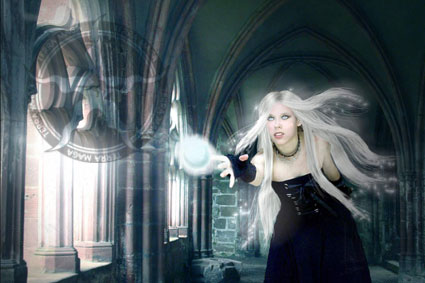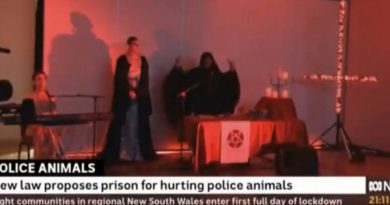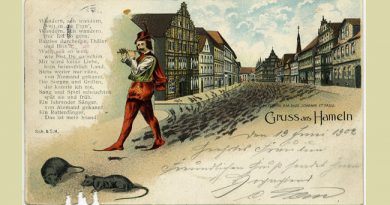Mysteries of WitchCraft
The French court of the Sun King, Louis XIV, was a flamboyant, extravagant place. But underneath the facade was a cauldron of hatred, deceit and social climbing. And underpinning the more unsavoury factors of the court was a conspiracy of murder and supposed witchcraft.
After the suspicious deaths of several of the French nobility, Louis ordered the Commissioner of Police, Nicholas de la Reynie, to investigate. Opening the Chambre Ardente, or Burning Court (a black draped room with candles), in 1677, over the following three years, 320 people were arrested and 36 were executed.
LA VOISON
Reynies investigation began with the arrest and torture of fortune teller Marie Bosse, who had boasted that she could be hired to kill husbands. Under torture she began a series
of confessions and namings of others.
Reaching right up to the heart of the French court, a Coven was unearthed. Practices described included using naked females as altars, and cutting the throats of babies to drink their blood.
At the centre of the Coven was Catherine Deshayes, a short, plump, but not unattractive witch better known as La Voisin. Controlling her Coven from a Paris villa, she indulged in astrology and seances, and police found various poisonous potions, wax images and other paraphernalia.
But her speciality was alleged to be poisoning the husbands of those who wanted to climb socially, and give love potions to others. Towards the end of the affair, the Kings mistress, Madame de Montespan, was implicated in the Coven, though she escaped with her life.
La Voisin was not so lucky. She was burned alive in February 1680, popularly being associated with the Devil, but proclaiming her innocence to the end. But was La Voisin associated with the Devil?
DEVIL WORSHIPPERS?
Medieval theologian St Thomas Aquinas did much to associate witchcraft with the Devil, arguing that demons formed an evil army of lesser angels in league with Satan; demons who could lure humans to his service.
These humans were the witches who, as the mythology formulated, met at diabolical sabbats where much debauchery would be done, including blood sacrifice and showing allegiance to the Devil by kissing his anus.
ISOBEL GOWDIE
Typical of this is the case of Isobel Gowdie, one of the witches tried at Auldearne near Inverness in 1662. Isobel, an attractive redhead who entered into a boring marriage with a farmer, shocked the elders of her local kirk by admitting she had been a witch for some 15 years.
Such shock declarations and actions are often entered into by bored partners today, but in the times of the witchhunts, it was far more dangerous, as Isobel found out.
It is not recorded whether Isobel was executed, but, when her confession is taken into account, it is hard to believe that she survived. For Isobel declared that she had met the Devil, renounced Jesus, and given herself to him.
On his instructions she had killed several people with diabolical arrows and often met the Devil with other women where he had sucked her blood and copulated with her.
Describing the Devil as a big, black, hairy man, she would fly to see him on a little horse. Indeed, her descriptions of the debauchery that went on at these sabbats were most graphic, even though many commentators accept that they were really figments of a fantasising or disturbed mind.
TRADITIONAL WITCHCRAFT?
The reality of witchcraft was, though, very different. One popular term associated with it is the sabbat. Still practiced by many witches today, the sabbats usually happen on the four great pagan festivals of Candlemas, Beltane, Lammas and Samhein, better known as Halloween. Covens will gather, perhaps in a forest glade, where the witches venerate nature.
Such covens are traditionally said to consist of 13 members headed by a priest or priestess. Usually they venerate nature through the Goddess, who is usually associated with the moon, and her consort the Horned God; a Godhead who predates Christianity and ideas concerning the Devil, and is widely associated with hunting.
WICCA
Nowadays witches prefer to call themselves Wiccans, a word associated with the old pagan fertility religions. Not all witches practice in covens, preferring to work alone. Indeed, there appears to be no formal religion involved in witchcraft. Rather, it is simply based on age old beliefs in latent powers associated with nature.
However, due to the power of the mass media, the above mythologies still tend to be widespread. From silly fanatasising people, to someone who was most likely nothing more than a murderess, sensationalism must offer something more mysterious and macabre.
Alternatively, the Dianic tradition venerates the Goddess in the form of Diana, Goddess of Hunting. This tradition has attracted a distinctly feminist tradition and ideology. But contrary to popular beliefs, witches are far removed from associations with the Devil, and they do not, now, indulge in sacrifice.
LEFT AND RIGHT PATHS
As to the evil influences of witchcraft, the media has made much of the concept of Black and White witches. Yet even this is more a media creation than a reality.
Wiccan folklore does have the concept of the Left and Right Hand Path. The Left is seen as bad, whereas the Right is good. Clearly, as in all walks of life, there will be those who try to use the ritual of Witchcraft to do bad, but for the majority the golden rule of witchcraft is known as the Wiccan Rede:
And if it harm none, do what you will.
(c) Anthony North, March 2008
Some of the WitchCrafts :
There are numerous styles of Witchcraft:
Alexandrian Witchcraft is named after its founder Alexander Sanders. Sanders is the self proclaimed “King of the Witches”. This witchcraft is the second largest to come out of England. It has great emphasis on cord magic and ceremonial magic. The worshipping is done in skyclad. The Alexandrian Witchcraft is strongest in Canada, but has gone into steady decline in the States and no longer has any association with its founder.
Gardnerian Witchcraft was named after Gerald B Gardner is the dominant tradition in the world today. It has been subject to a lot of criticism and reinterpretation. It centers on the worship of the Goddess and her consort, the Horned God. They are represented in the coven by the High Priestess anf High Priest. Nature is honored as is the acceptance of all living things. The belief of reincarnation is emphasized. Also the wiccan Rede of harming no living thing is followed. Eight seasonal Pagan sabbats are also observed. Initiation into the coven is given by the High Priestess or High Priest. You must enter the craft in “perfect love and perfect trust”. This means you must trust you fellow coveners. A man must be initiated into the coven by a woman, and a woman must be initiated into the coven by a man. The hierarchy in Gardnerian Witchcraft has three degrees of advancement. Tradition calls for advancement to be separated by a minimum of a year and one day. Only a third degree witch may become a high priestess or high priest. The high priestess is always the head of the coven. Rituals are performed within a magical circle. The original tradition of the Gardnerian witchcraft was to worship in the nude although most covens now worship robed. Another tradition is “scourging”. This is the light flogging of coveners with cords as a means of symbolic suffering……..
Faery tradition is an American witchcraft founded by Victor Anderson and Gwydion Pendderwen. Although in the beginning this craft was very small secretive it has now reached a wide audience. The faery tradition honors nature and reveres the dieties that personify the forces of nature, life, fertility, death and rebirth. There is no standard secret book of shadows in this craft. Some aspects of the craft still remain a secret but most aspects are now taught openly. The faery tradition provides for a passing of power upon initiation. Faery tradition Witchcraft also identifies different currents of energy within the universe. Two key teachings centre on the iron and pearl pentagrams. These are meditational tools to bring oneself into balance with the universe and to explore the self. The faery witchcraft tradition also permits eclectism. Rituals are offerings of beauty to the Gods.
Seax Witchcraft was founded in 1973 by Raymond Buckland and seems to have a slight saxon basis. Buckland had been dissatified with the corruption and ego trips he saw in some covens and developed seax wicca to answer those concerns. The coven is democratic in that its leader is chosen by election. There is no binding or ritual scouging. Covens decide for themselves whether to worship clothed or skyclad. The rituals are published in The Tree : Complete Book of Saxon Witchcraft. The tradition is also open to anyone
Wicca is a variety of witchcraft that is founded on religious and magical concepts. Most of the adherents of wicca identify themselves as witches. Wicca is just only one variety of pagan Witchcraft, with specific beliefs and practices. Many Wiccans choose to call themselves Pagans. However, the umbrella term Paganism encompasses many faiths that have nothing to do with Wicca or witchcraft



